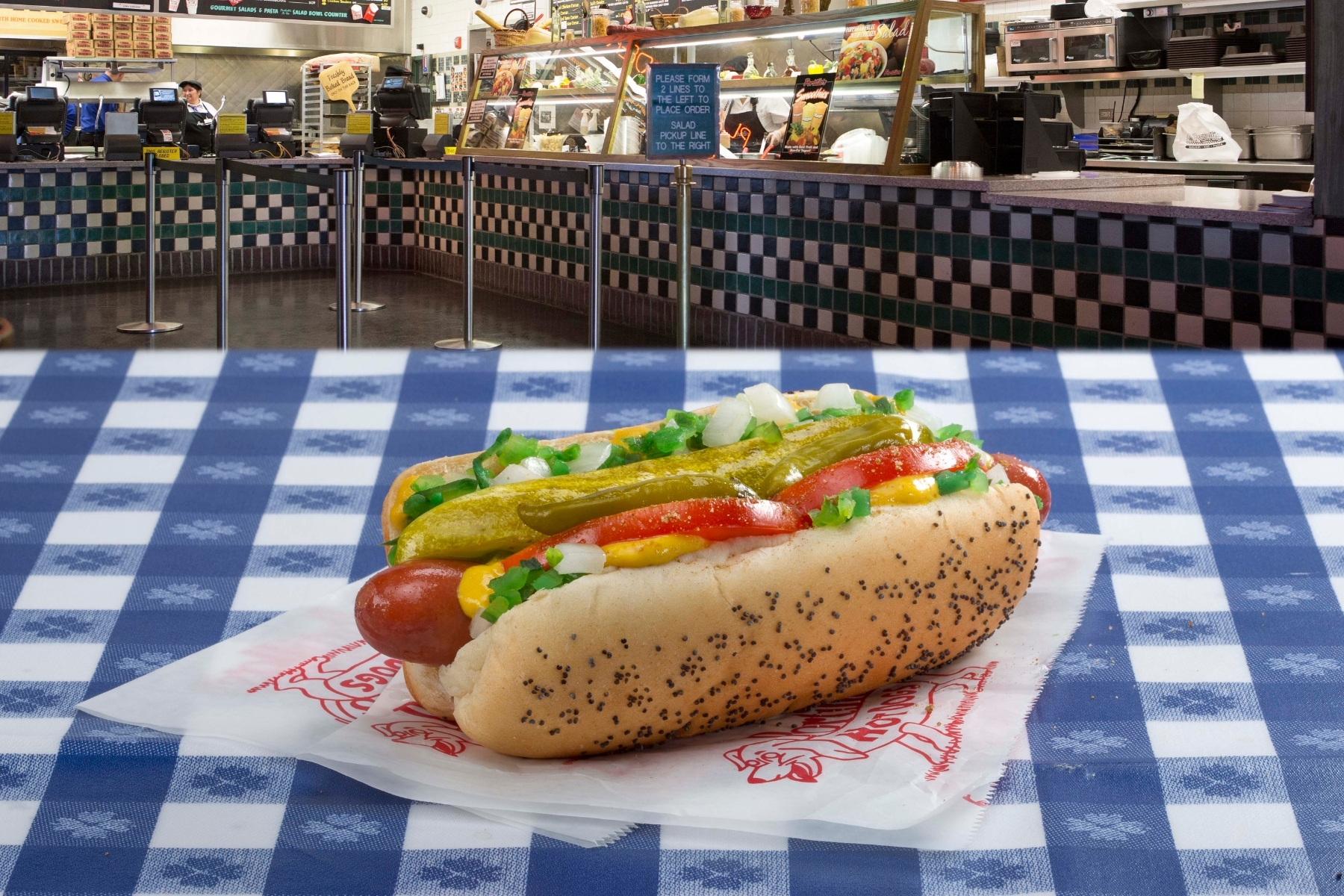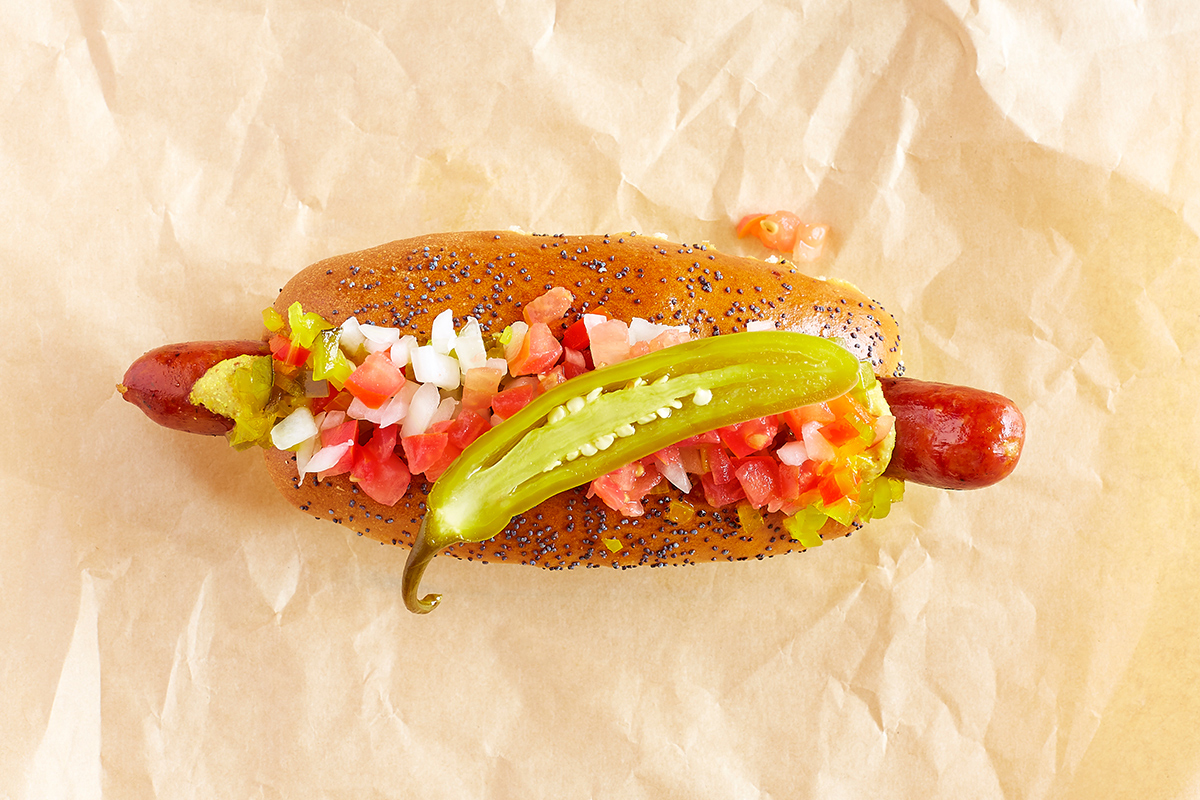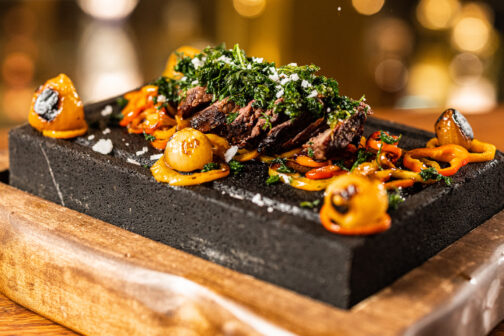They say that Dallas is not a hot dog town. But even the most avid dog denialist had to raise an eyebrow early this month, when mobs of eager customers descended on a new suburban location of Chicago-based chain Portillo’s.
Like many diners with long memories, my thoughts turned from Portillo’s to Luscher’s Red Hots. Dallas’ best Chicago-style hot dog joint had an all-too-short reign in Deep Ellum, where before closing in 2016 it served not just fully loaded dogs but (and I mean this as a compliment) one of the messiest burgers I’ve ever tackled.
So I called Brian Luscher, the Chicago native who served all those Red Hots, and who now works in the suburbs himself as culinary director for 33 Restaurant Group. I didn’t ask him to review Portillo’s. Instead, we got more existential: what creates a hot dog culture? Can Dallas ever be a hot dog town? Does it sting a bit to see wall-to-wall media and public hype for a national chain after his own business failed to survive?
I hate to be a tease, but the best way to answer all those questions is to start with the question of how Chicago became a hot dog town.
“There’s something blue-collar about a hot dog,” Luscher says. “There’s a commonality of experience. A lot of these hot dog joints, it’s just a counter, a couple of bar stools if you’re lucky, you eat it and you go. It’s a quick working man’s lunch. The way you eat it, the way you gotta do the ‘Chicago lean,’ so you don’t drip it all over your shoulder. You gotta put your elbows on the counter. The romantic notion I always had about Luscher’s was there would be a guy in a suit next to a guy in a tool belt, and they’d be eating hot dogs and drinking paper cups of beer.”

That egalitarian spirit, all stripes of people united by the need for a quick lunch, has informed the Chicago hot dog experience for generations. Luscher can catalog the unlikely places where hot dog spots are located, all united by two factors: low rent and proximity to workplaces.
“Even in the suburbs of Chicago, you’ll find the hot dog and beef joints in the quirkiest spots, because it has to be low overhead,” he explains. “Weird strip malls, inside convenience stores. Mobile homes that they converted. On the road to construction businesses. Lumber yards, concrete plants, gravel yards—guaranteed there’s a hot dog joint on the way there. There’s gonna be a Mercedes parked next to a white work truck.”
Now we can get to the answers to our questions. Does Luscher have heartburn about the new craze? “A little bit,” he concedes, but he’s had time to think deeply about the failure of his own venture. Deep Ellum looked like the right neighborhood for it—scruffy, working-class, a place where all kinds of people converge—but hot dog joints thrive in business areas, not party destinations. Portillo’s, he thinks, was smarter to choose a location in The Colony, surrounded by major corporate headquarters.
“I’ve always had this suspicion that if I had opened it out in the suburbs I would have had a much different success curve,” Luscher says. “The commerce up and down, everything that’s being built, all the businesses that have put headquarters here, there’s so many people. And a large number of Midwesterners.”
But even thousands of Midwest transplants willing to sit in a drive-thru line for an hour—Luscher witnessed a line of 40 cars at the Portillo’s drive-thru recently, and on Friday the Dallas Morning News’ Sarah Blaskovich waited in line for 53 minutes to dine in—are not enough to make Dallas into a hot dog town. For the Midwesterners, Portillo’s is more about what it represents, the nostalgia it carries, than the actual foodstuff.
“Everybody from Chicago has their favorite pizza joint, and it’s usually the one that was in their neighborhood,” Luscher points out while explaining the pull of the hot dog as more than just a meal. “It’s like looking at pictures of your vacation and thinking that you’ve still got a tan. You have this memory of what it’s supposed to be. Will it ever match your recollection of what it was?”
In the case of Portillo’s, specifically, the answer is probably not. The company is now publicly traded, with large stakes held by private equity firm Berkshire Partners (no relationship to Berkshire & Hathaway) and Goldman Sachs. Chicago-based food writer Titus Ruscitti, who occasionally cooks up his own Italian beef pop-up business, has a low opinion of the chain in its private equity era and left it off his list of Chicago’s essential hot dogs.

(Berkshire Partners also has an ownership interest in CrossFit, which means that you can pay one company for all your caloric intake and output. Streamlined!)
But back to Dallas’ hot dog culture, and whether we can develop one: in a way, it doesn’t matter. Think back to the purpose hot dog culture serves in Chicago, as a democratic leveler, a working lunch for everybody. In Japan, that function is done by ramen, which is also often served at counters where diners stand while they eat. Along the Mediterranean, gyro and shawarma wraps serve the same purpose. In Dallas, we have burgers and tacos.
When Luscher mentioned hot dog spots in mobile homes and near construction sites, I immediately thought of the taco trucks that pull up to Texas work sites and the way tacos appeal equally to all classes of people. But burgers have held that place in the Dallas scene for even longer, mainly because Dallas’ native burger style is somewhat smaller and easier to snarf than the half-pound behemoths of some other cities.
“You look at Keller’s and Jake’s and all the little drive-thru spots,” Luscher points out. “It’s a paper-thin burger on a white bread bun. They’ve got hot dogs on the menu, but it’s like hot dogs are for kids almost. To get something cheap and quick in that same standing-at-the-counter, a suit next to a tool belt [environment], that’s a burger in Dallas.”
If Dallas ever becomes a hot dog city, we may have immigrant cultures to thank. Okaeri Cafe in Richardson serves a Japanese-style dog topped with seaweed, bonito flakes, and kewpie mayo. Guatemalan hot dogs are a Dallas thing, too.
But if we never achieve hot dog liftoff, that would not be a failing on our part. It would be because we have different foods to fill the same cultural niche. We’re a burger city, a corndog city, and increasingly a taco city. Maybe hot dogs will someday join that club, but if they don’t, we have plenty of good, quick foods for consolation.
Two pro hot dog tips from Brian Luscher
If you’ve read this far, you deserve a reward: some hot dog-eating advice.
First tip: you don’t have to order sides. You can just eat more dogs. “I don’t even need the fries or onion rings,” Luscher says. “I’ll eat two, three hot dogs with a paper cup of beer.”
Second: if you’re looking for locally-owned Dallas-area spots that can replicate the Chicago experience, Luscher has recommendations. First one: Weinberger’s Deli in Grapevine. “A lot of people are big on their Italian beef. I think they’re roasting their own beef and they’ve got the right bread and everything.” Second: TJ’s Dawg House, a food truck in Richardson, which uses Vienna brand beef for its dogs.
But Luscher’s favorite spot right now is Chicago Style Dog’s on Jupiter Road in Garland, in the shadow of I-635.
“They’re slinging dogs and beefs and it tastes like home. They’ve got the poppy seed bun. They’re not cutting corners. And they’re good people.” Hank Vaughn, the Dallas Observer’s Chicago correspondent, is a fan, too.
If I get a hot dog craving soon, I know where I’m going.
Author







